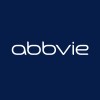
UC-MSCs Gel Treatment Difficult Healing of Skin Ulcers
Difficult to Healing of Skin UlcersThis study for a six-month trials, Randomized, open, and parallel comparison before and after its own, Stage test includes screening stage, treatment period and follow-up period. In accordance with chronic wound criteria for the patient, By producing the principle of random number, Were randomly divided into UC-MSCs Gel group or Gel group, The researchers according to the situation of wound healing time and decided to use the secondary treatment, To observe the clinical efficacy and safety.

Combination Corticosteroids+5-aminosalicylic Acids Compared to Corticosteroids Alone (for Ulcerative...
Ulcerative ColitisThe role of steroids in the treatment of severe ulcerative colitis (UC) exacerbation is well established and recommended by professional societies. Similarly, 5-aminosalycilates (5-ASA) agents in the form of mesalamine/mesalzine are well established proven therapy in mild-moderate UC, and the combination of oral 5-ASA with topical (per-rectal enema) 5-ASA was shown to be superior to oral 5ASA alone in patients with mild moderate UC. Thus, in most cases, when a patient with UC experiences a flare while taking 5-ASA therapy, treatment is usually optimized by maximizing the oral dose to 4gr/day and adding topical therapy until the flare is controlled. If this is unhelpful, or if the flare is severe to begin with, corticosteroids are usually prescribed. However, there are very scarce data comparing steroids versus 5-ASA in the treatment of severe UC exacerbation. The aim of this study is to compare the efficacy of steroids alone vs. combination of steroids + 5-ASA in the treatment of moderate-severe UC exacerbation.

Testing Fish Oil Derivatives In Healing Of Chronic Venous Leg Ulcers
Venous Stasis UlcersThe purpose of this study is to test the efficacy of an oral, nutrient intervention containing the bioactive components of fish oil to promote healing of chronic venous leg ulcers (CVLU). If this systemic, nutrient intervention is found to alter the microenvironment of CVLU, the science of wound healing and care of patients with CVLU will be vastly improved.

The Therapeutic Role of Intravenous Albumin Administration for Peptic Ulcer Bleeding Patients With...
Peptic Ulcer BleedingHypoalbuminemiaTo test whether intravenous albumin can decrease the rebleeding rate or shorten the duration of hospitalization in patients with peptic ulcer bleeding and hypoalbuminemia.

Feasibility and Safety and Evaluation of the Potential Efficacy of Autologous Platelet-rich Plasma...
Chronic UlcerINTRODUCTION: Vascular ulcers are an important pathology in the daily medical practice in all the assistance levels, and they have big repercussion referring to individual, social and labour levels, supposing a big consumption of human and material resources.The cure with autologous platelet rich plasma (autologous PRP) has demonstrated in different studies a decrease in the cicatrization time comparing to conventional methods in hospital levels, which becomes interesting contrasting its efficacy in primary care. AIM:Evaluate the practicability, security and potential of the autologous PRP in the treatment of vascular ulcers, comparing to the conventional treatment ( cure with humid environment), in primary care patients with chronic venous insufficiency in C-6 degree (CEAP classification). DESIGN:A pilot study will be executed, which will consist in a randomized clinical test, multicentred, in parallel groups and opened. 40 patients suffering of venous vascular ulcers will be studied, who will be between the age of 40-80 years old, and who will be attached to five health centers. Variables for the identification, following, result and patient profile have been defined. Emphasize the variables of "ulcer area decreasing", "CIVIQ index", "% one cure per week" .

Use of dHACM in the Treatment of Venous Leg Ulcers
Leg UlcerThe overall objective of this study is to evaluate the effectiveness of dehydrated human amnion/ chorion membrane (dHACM) in reducing time to complete wound closure in patients with venous leg ulcers (VLUs).

A Phase I/III Study of D961H 10 mg and 20 mg in Japanese Paediatric Patients With Gastrointestinal...
Gastric Ulcer (GU)Duodenal Ulcer (DU)4 moreThe objective of this study is to assess the safety, pharmacokinetics, pharmacodynamics and efficacy of repeated once daily oral administration of D961H 10 mg and D961H 20 mg in Japanese paediatric patients aged 1 to 14 years old who either have a diagnosis of or are suspected to have gastric ulcer (GU), duodenal ulcer (DU), anastomotic ulcer (AU), non-erosive reflux esophagitis disease (NERD), reflux esophagitis (RE) or Zollinger-Ellison syndrome.

Study to Evaluate the Safety and Efficacy of Two Adalimumab Dosing Regimens in Subjects With Moderate...
Ulcerative Colitis (UC)To evaluate safety and efficacy of two adalimumab dosing regimens for induction and maintenance (standard and higher dosing) in achieving clinical remission in subjects with moderately to severely active ulcerative colitis.

Electrical Stimulation and Expression of VEGF and NO in Diabetic Foot Ulcer
Diabetic Foot UlcerThis study aimed to investigate the effect of low intensity cathodal direct current on the release of plasma vascular endothelial growth factor (VEGF) and nitric oxide (NO) in diabetic foot ulceration.

Transdermal Continuous Oxygen Therapy for Diabetic Foot Ulcers
Diabetic Foot UlcersThis is a multicenter, prospective, parallel, double-blinded, validation study of up to 12 weeks duration to evaluate the safety and effectiveness of EPIFLO for the treatment of Diabetic Foot Ulcer. The primary objectives of this study are: 1) to evaluate the effectiveness of EPIFLO in combination with standard wound therapy on wound healing as compared to standard wound therapy alone; and 2) Screening for potential safety issues. Diabetic subjects with a Diabetic Foot Ulcer present for a minimum of 30 days will be enrolled. All subjects enrolled in the study will receive a standard wound therapy regimen consisting of, wound cleansing, moist wound care, off-loading and as appropriate, aggressive debridement. Subjects will be randomized to either the Treatment arm or the Control arm. Subjects will be assessed weekly for signs of wound healing during the 12-week Treatment Period, once two weeks after wound closure and once at the end of 12-week durability Period.
